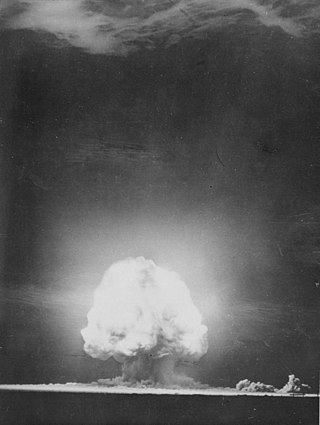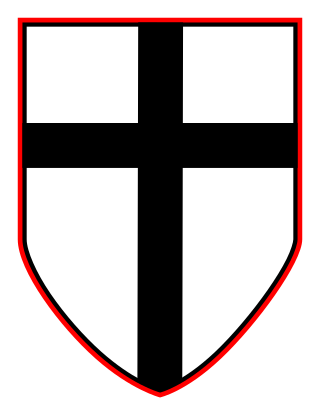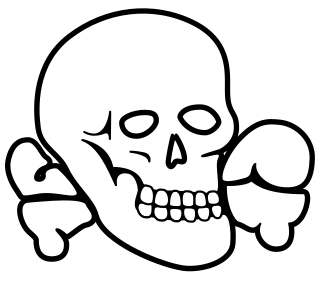Army
Small arms
In the early stages of the war, Sweden relied on a numerous army through conscription and the use of a Total Defence policy. In 1945, the Swedish army had been modernized from the use of World War I weapons to semi-automatic rifles and high-tech firearms such as the Carl Gustav. The infantry had also been equipped with a great deal of rocket launchers for anti-tank warfare, and the availability of artillery had increased drastically with the World War II build-up.
| Name | Origin | Type | Versions | Quantity | In service | Notes |
|---|---|---|---|---|---|---|
| Pistol m/07 | Semi-automatic pistol | Pistol m/07 | Unknown | 1907-1980's | License-built FN Browning 1903. | |
| Pistol m/39 | Semi-automatic pistol | Pistol m/39 | Unknown | 1939-???? | - | |
| Pistol m/40 | Semi-automatic pistol | Pistol m/40 Pistol m/40B | 100,000 | 1940-1990s | License-built Lahti L-35, manufactured by Husqvarna | |
| Kulsprutepistol m/37 | Submachine gun | m/37 m/37-39 m/37-39F | 35,000 | 1939-1980s | - | |
| Kpist m/39 | Submachine gun | Kpist m/39 | Unknown | 1940s-???? | - | |
| Kpist m/40 | Submachine gun | Kpist m/40 | 500 | 1940-1951 | M1921 Thompson submachine gun. | |
| Kpist m/45 | Submachine gun | m/45 | 300,000 | 1945–2007 | - | |
| Gevär m/96 | Bolt-action rifle | Karbin m/94 Gevär m/96 Gevär m/38 Gevär m/41 Gevär m/41B | 127,000 535,000 88,000 5,300 5,300 | 1895-1980s | - | |
| Gevär m/39 | Bolt-action rifle | m/39 m/40 | 5,000 | 1939-1970s | Modified German K98K's. | |
| Automatgevär m/42 | Self-loading rifle | Ag m/42 | 30,000 | 1942-1960s | - | |
| Kulsprutegevär m/21, m/21-37, m/37 | Automatic rifle | m/21 m/37 | Unknown | 1921–1980 | Modified M1918 Browning produced under license. | |
| Kg m/39 | {{}} | Automatic rifle | Kg m/39 | Unknown | 1939-???? | - |
| Kg m/40 | Automatic rifle | Kg m/40 | 5,000 | 1940-???? | - | |
| Ksp m/14 | Medium machine gun | Ksp m/14 m/14-29 | Unknown | 1910s-1940s | Standard mount. Ksp m/36 mount. | |
| Ksp m/36 | Medium machine gun | Ksp m/36 | Unknown | 1910s-???? | Upgraded M1917 Browning produced under license. | |
| Ksp m/42 | Medium machine gun | Ksp m/42 | 1942–present | License-built, modified M1919. | ||
| Pvkan m/39 | {{}} | Anti-tank rifle | Pvkan m/39 | 1939–???? | - | |
| Pvg m/42 | Recoilless anti-tank rifle | Pvg m/42 | 1942–???? | - | ||
| Raketgevär 46 | Recoilless anti-tank weapon | Raketgevär 46 | Unknown | 1940s-1960s | License-built M1 Bazooka | |
Armoured fighting vehicles
At the beginning of World War II, Sweden had a very low number of motorized vehicles, instead relying horses for transportation. When the war broke out in 1939, Sweden had one armoured division consisting of merely 13 light tanks, only 3 of which were considered to be modern (the remaining 10 had been in service since the 1920s). In 1945, the number of tanks serving the Swedish army had increased from 13 to more than 800.
Number of tanks pre-war: 14
Number of tanks in 1939: 29
Number of tanks in 1940: 38
Number of tanks in 1941: 135
Number of tanks in 1942: 373
Number of tanks in 1943: 544
Number of tanks in 1944: 795
Number of tanks in 1945: 795+
| Name | Origin | Type | Versions | Quantity | In service | Notes |
|---|---|---|---|---|---|---|
| Pbil m/39 | Armoured car | Pbil m/39 Pbil m/40 | 15 30 | 1939-1956 1939-1960s | Version with Scania-Vabis engine Version with Volvo engine. | |
| Pbil m/41 | Armoured car | Pbil m/41 | 5 | 1933–1980 | More than 50 produced, most of them sold to other countries before and during the war. | |
| Landsverk L-120 | Light tank | L-120 | 1 | 1937–1940 | Prototype in active service but never mass-produced. | |
| Strv m/21-29 | Light tank | m/21 m/21-29 | 10 5 former m/21 | 1922-1939 | Standard version Upgraded with new engine and electrical starter. | |
| Strv m/31 | Light tank | Strv m/31 | 3 | 1935–1940 | Dug in as static bunkers for the Skåne Line | |
| Strv m/37 | Light tank | Strv m/37 | 48 | 1938–1953 | License-built version of the AH-IV with Scania-Vabis engines. | |
| L-60 | Light tank | Strv m/38 Strv m/39 Strv m/40L Strv m/40K | 16 20 100 80 | 1938-1957 1940-1957 1941-1957 1943-1960 | Landsverk L-60 In Swedish service. | |
| Strv m/41 | Light tank | Strv m/41S1 Strv m/41S2 | 116 104 | 1942-1950s | License-built, upgraded version of the LT. vz. 38. | |
| Strv m/42 | Medium tank | Strv m/42 TM Strv m/42 TH Strv m/42 EH Strv m/42 TV | 100 125+30 former TM 57 70 former TM | 1943-???? 1943-1960 1944-1960 1944-1960 | 2 Scania-Vabis engines and electromagnetic gearboxes. 2 Scania-Vabis engines and hydraulic gearboxes. 1 Volve engine and a hydraulic gearbox. 2 Scania-Vabis engines and a mechanical gearbox. | |
| Sav m/43 | Self-propelled artillery | Sav m/43 | 18 | 1944–1973 | - | |
| Tgbil m/42 | Armoured personnel carrier | Tgbil m/42 SKP Tgbil m/42 VKP | 262 100 | 1944–2004 | Manufactured by Scania-Vabis Manufactured by Volvo | |
Artillery
Sweden's artillery corps was made to specialize in mobility and warfare in the Swedish homeland terrain, which mostly consisted of thick forests and small, remote towns. Anti-aircraft warfare was considered important even before the war began, due to Sweden's small aircraft capacity in the 1930s. The Bofors 40 mm, a Swedish auto cannon, was exported to most warring countries in thousands of examples, making it the most common anti-aircraft weapon of the war.
| Name | Origin | Type | Versions | Quantity | In service | Notes |
|---|---|---|---|---|---|---|
| Pvkan m/38 | Light anti-tank gun | m/34 m/38 m/38F | Unknown | 1935-???? | 37mm Bofors AT gun. | |
| Lvakan m/40 | Anti-aircraft autocannon | m/40 | 2,592 [1] | 1940-???? | 20mm Bofors AA gun. | |
| Lvakan m/36 | Anti-aircraft autocannon | m/36 m/36A m/36H m/36P m/38 m/39 | 924 [2] | 1934–present | 40mm Bofors L/60 AA gun. | |
| Bofors 75 mm Model 1929 | Anti-aircraft gun | 7.5 cm m/30 8 cm m/29 | 350 [2] | 1930–present | Another 8 bought by Finland, 36 by the Netherlands and dozens by Hungary | |
| Bofors 75 mm Model 1934 | Mountain gun | Bofors 75 mm | 74 [1] | 1934-???? | - | |
| 10.5 cm kanon modell 1927 | Heavy field gun | Model 1927 | 4 in the coastal artillery, many more in the army | 1927–1945 | - | |
| Kanon m/34 | Heavy field gun | m/34 | 68 | 1942-???? | - | |
| Bofors 12 cm m/14 | Towed howitzer | m/14 | Unknown | ????-???? | - | |
| Haubits m/40 | Towed howitzer | m/40 | 400 total | 1940-???? | - | |
In addition to these weapons, Sweden also possessed 9 unspecified heavy anti-aircraft guns with a caliber of 105 mm. [2]















